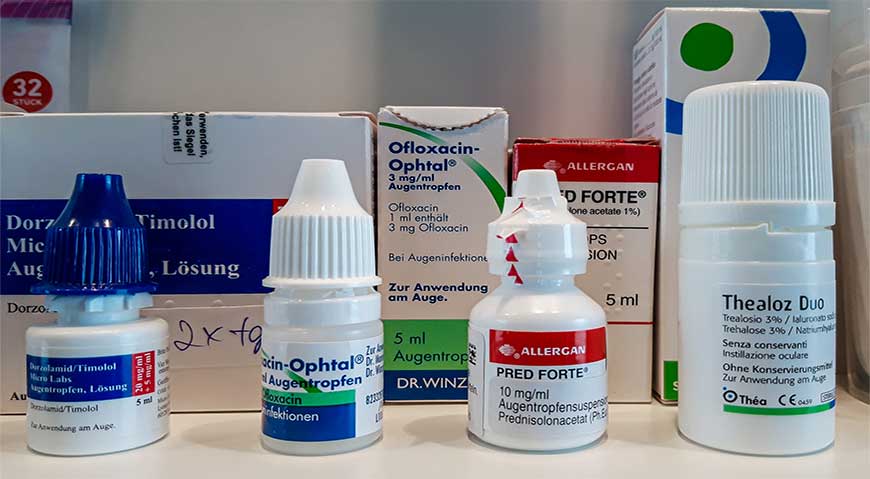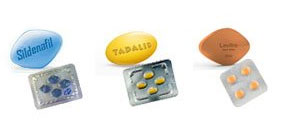Cyclosporine Eye Drops For Dogs: Everything You Need To Know

- Introduction
- Uses of Cyclosporine Eye Drops For Dogs
- Dosage of Cyclosporine Eye Drops For Dogs
- Administration of The Eye Drops
- Side Effects of Cyclosporine Eye Drops For Dogs
- Storing The Eye Drops
- Cost of Cyclosporine Eye Drops For Dogs
- Drug Interactions With Cyclosporine Eye Drops
- Overdose of Cyclosporine Eye Drops
- Where Can You Get Cyclosporine Eye Drops?
- Conclusion
In this article, we’ll discuss the Cyclosporine eye drops for dogs in detail; including things like its dosage, side effects, administration, etc.
Introduction
Cyclosporine is a strong immune-suppressing medication that is used to treat keratoconjunctivitis sicca (KCS) or dry eye in dogs. It has also shown significant results in treating other inflammatory conditions in the eye such as pannus, observed in German Shepherds. Pannus is an immune disorder of the cornea which if left untreated, results in permanent blindness.
Artificial tears and punctual occlusions are often used for tear replacement or preservation. The new treatment approach is, however, specifically designed to modify the underlying disease process. For the treatment of severe dry eye disease, cyclosporin A (CsA), the very first one of the new generation immunomodulatory drugs, is frequently used.
On local administration of cyclosporine eye drops for dogs, it obtains effective drug concentration at the target area only. This ensures that the risk of perilous side effects is greatly mitigated. In addition to this, microspheres, implants, and liposomes have been developed for the administration of CsA subconjunctivally to enhance its efficiency.
Uses of Cyclosporine Eye Drops For Dogs
When used to treat KCS in dogs, cyclosporine results in increased tear production. It also decreases local inflammation in the eye and surrounding lacrimal glands. Ophthalmic cyclosporine has a calming effect on inflammation of the cornea and sclera.
Expert veterinarians may ask to perform a Schirmer Tear Test on your dog to determine the severity of your dog’s dry eye syndrome. Excessive blinking, swelling around the eyelids, and swollen conjunctival blood vessels are all tell-tale signs of severe KCS.
Moreover, if administered orally or intravenously, cyclosporine can also treat several immune-mediated disorders in dogs. These include hemolytic anemia and perineal fistula in addition to KCS. Veterinarians sometimes prescribe cyclosporine after kidney or bone-marrow transplants to prevent the immune system from rejecting the new tissue. This is due to cyclosporine’s tendency to act as both an immune-suppressing and immune-modulating agent.
Cyclosporine may also be used in animals that are being treated for a corneal ulcer. However, it becomes essential to ensure that these dogs get topical ophthalmic antibiotics and additional monitoring as well.
Dosage of Cyclosporine Eye Drops For Dogs
Cyclosporine eye drops for dogs is a specially compounded medication. This means it is custom-made for your pet according to the dosage prescribed by a veterinarian. Therefore, it becomes important to administer this medication exactly as your veterinarian prescribes.
Generally, cyclosporine eye drops for dogs are administered twice a day, 12 hours apart. If you miss a dose of cyclosporine, administer it as soon as possible. If it is close to the next scheduled dose, return to the regular schedule. Do not administer a double dose to try and catch up as it might negatively impact your pooch.
If you are applying another ointment or administering other eye drops, do it after 5 minutes of application of the cyclosporine eye drops.
Administration of The Eye Drops
Wash your hands thoroughly or wear gloves before administering the medication. Your veterinarian will help you develop a technique for administering the solution that will be both effective and stress-free for you and your dog. Wash your hands thoroughly after administering this medication too.
Cyclosporine eye drops should be applied to the lower eyelid sac also known as the conjunctival sac. Do not touch the tip of the dropper to your dog’s eye as this highly increases the chances of contamination. Do not touch the dropper tip with your fingers either.
Depending on the temperament and comfort level of your dog, you might need further assistance. While holding your dog securely, open one eye at a time to apply the eye drops. After the completion of this step, allow your dog to blink to let the emulsion coat its eyes completely.
Dogs that show positive results after the administration of the cyclosporine eye drops, will generally be advised to take it for the remainder of their lives. You may not see an improvement in symptoms for six to eight weeks. An exam is generally scheduled within the first two months of starting treatment. If no response is seen, your veterinarian may increase the concentration of cyclosporine.
Side Effects of Cyclosporine Eye Drops For Dogs
Cyclosporine is generally well tolerated by animals and is not known to produce any systemic side effects. However, mild side effects might include:
- Mild irritation
- Eye redness and puffiness
- Eyelid spasm
- Hair loss around the eye
- Burning sensation in the eyes accompanied by tingling
Other potentially serious symptoms may include:
- Weakness and muscle pain
- Fatigue
- Fever
- Abnormal bleeding or bruising
- Susceptibility to other infections
In case symptoms persist for a long time, it is best to consult a veterinarian for case-specific advice.
Storing The Eye Drops
Cyclosporine eye drops for dogs ought to be stored in capped and sealed containers, away from direct sunlight. The medication should be kept well out of reach of children and pets because if consumed orally, it can prove to be extremely toxic.
Do not store the eye drops in the freezer or the refrigerator as excessive heat, moisture, and cold can all degrade cyclosporine. Dispose of single-use vials of eye drops after application of the drops.
Moreover, different strengths or dosage forms of cyclosporine may have different storage requirements. Read the label carefully or ask your pharmacist for the storage requirements of the prescription you receive.
Cost of Cyclosporine Eye Drops For Dogs
Cyclosporine eye drops, due to their high efficacy rate and relatively safe formula, do not come cheap. The cost of cyclosporine eye drops for dogs depends on the dosage strength. A 10 ml vial can cost anywhere between 25-80$, depending on the brand.
Drug Interactions With Cyclosporine Eye Drops
Cyclosporine eye drops should not be administered to dogs who are allergic to it or other similar immunosuppressant drugs. Refrain from using the drops if your dog has bacterial, fungal, or viral infections around the eyes.
Cyclosporine eye drops are generally comprised of 2% cyclosporine in a carrier oil, such as corn or olive oil. They come in emulsion form and ought not to be used with medications like azathioprine or cyclophosphamide. In case your dog is on steroids, antifungal medications, or antibiotics, always consult your veterinarian before opting for cyclosporine eye drops.
While most dogs tolerate cyclosporine ophthalmic drops well, there is always the possibility of an allergic reaction. Generalized symptoms of an allergic reaction to medication can include hives, diarrhea, weakness, head shaking, or intense scratching. If you see any of these symptoms, contact your veterinarian or emergency veterinary clinic immediately.
Overdose of Cyclosporine Eye Drops
An overdose of cyclosporine eye drops is highly unlikely when used appropriately. However, there may be toxic effects if your dog accidentally consumes the medication. Signs of an overdose can include vomiting, drooling, tremors, agitation, and disorientation.
If your pooch was accidentally overdosed or has eaten this medication inadvertently, contact your veterinarian or the A.S.P.C.A.’s Animal Poison Control Center at 888-426-4435. Always bring the prescription container with you when you take your pet for any kind of treatment.
Where Can You Get Cyclosporine Eye Drops?
Cyclosporine eye drops for dogs are strictly prescription medication. If your prescription is old, pharmacists always insist on getting it renewed before buying cyclosporine eye drops. This is because your pet’s KCS might have improved or deteriorated, and this needs checking upon.
Administering an inaccurate or old dosage of the medication to your dog can cause potential health hazards. It is best to be safe when dealing with a potent immune-modulating and suppressing drug-like cyclosporine.
Most pet pharmacies always have these eye drops in stock. This is because veterinarians prescribe cyclosporine frequently without any qualms due to its relatively safe composition and high efficacy.
Conclusion
Some of the unfavorable physicochemical properties of ophthalmic cyclosporine (CsA) have been improved upon successfully. This was done by enhancing ocular availability and improving tolerance. However, only a few formulations of CsA are commercially available and viable. The extensive literature on the efficacy of CsA reflects the great medical interest in this challenging drug.
Different formulations may be suitable for different breeds of dogs, and the choice of the formulation may affect both short- and long-term clinical outcomes. The dosage has to be tailored to the requirements of each dog. Overall, cyclosporine eye drops alongside artificial lubricating tears remain the best treatment option for KCS in our canine friends.
February 4, 2021 Sam Bell











Comments